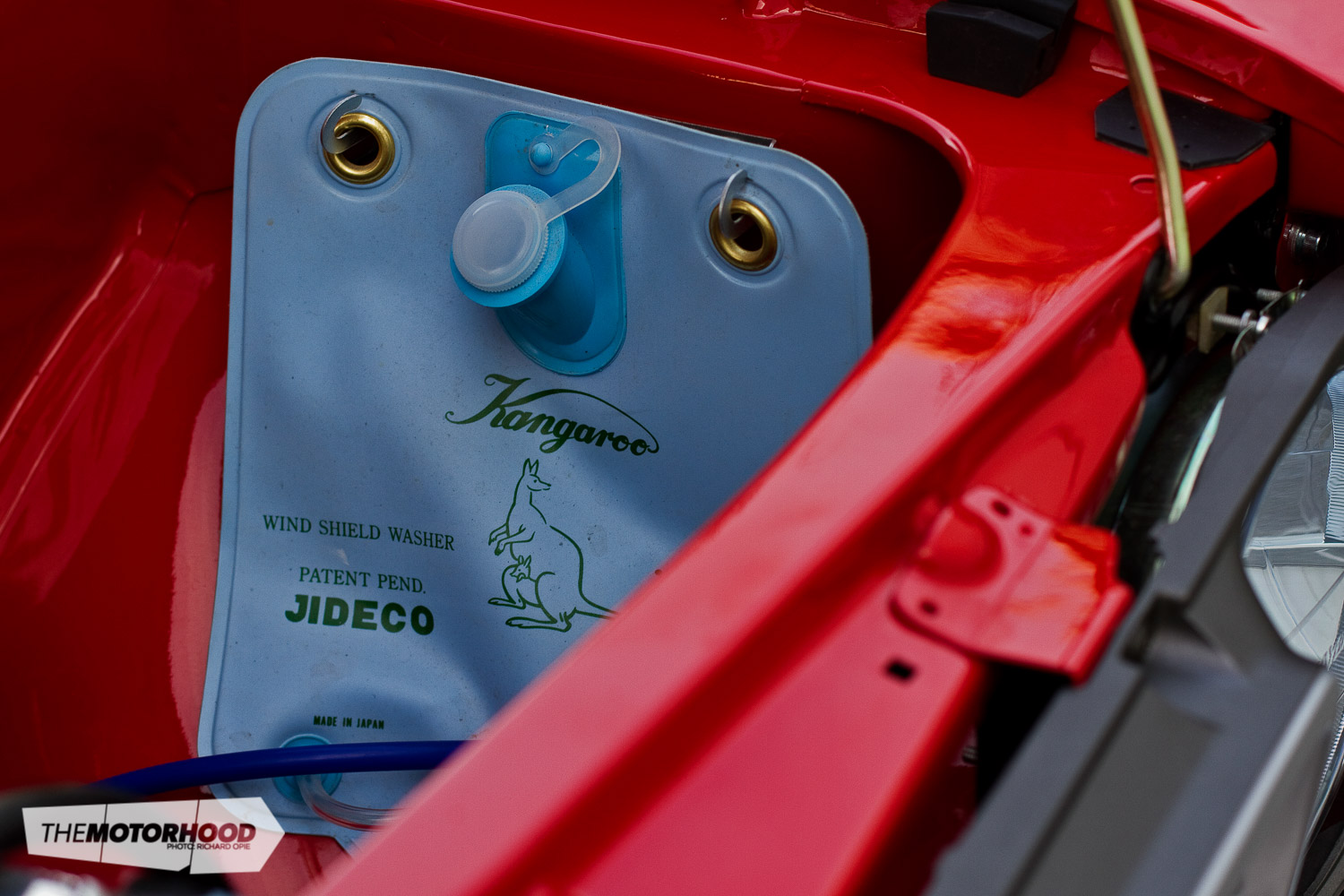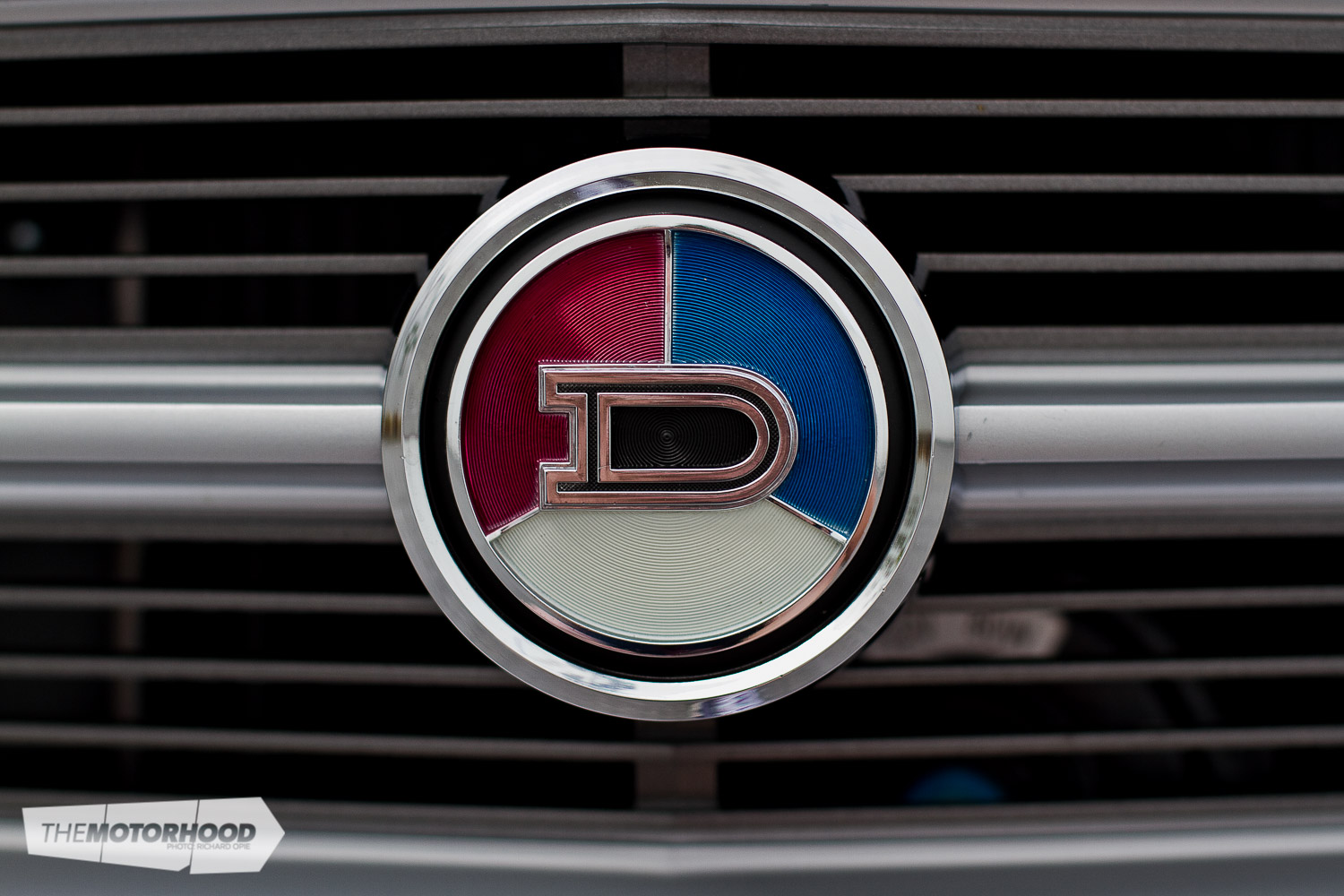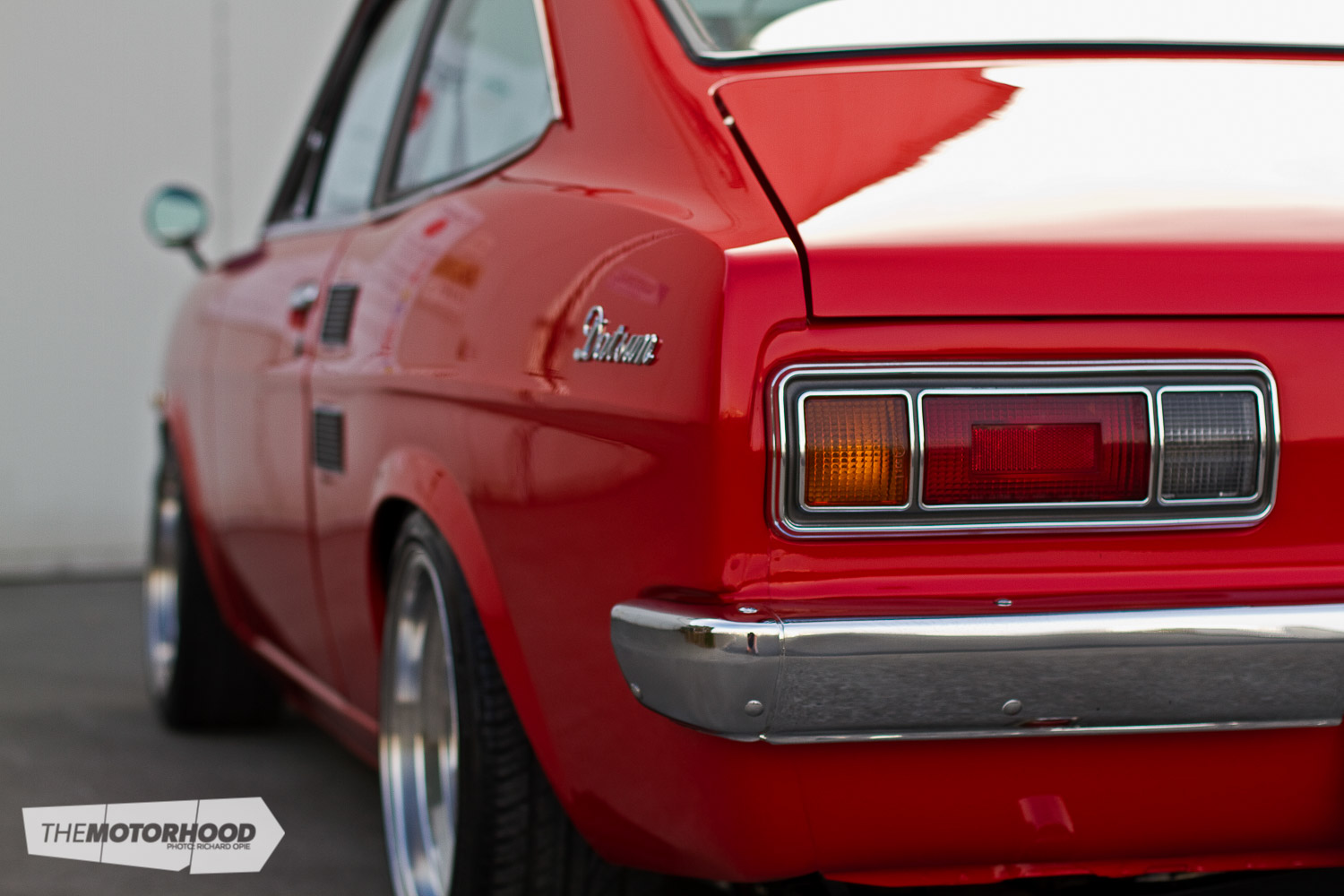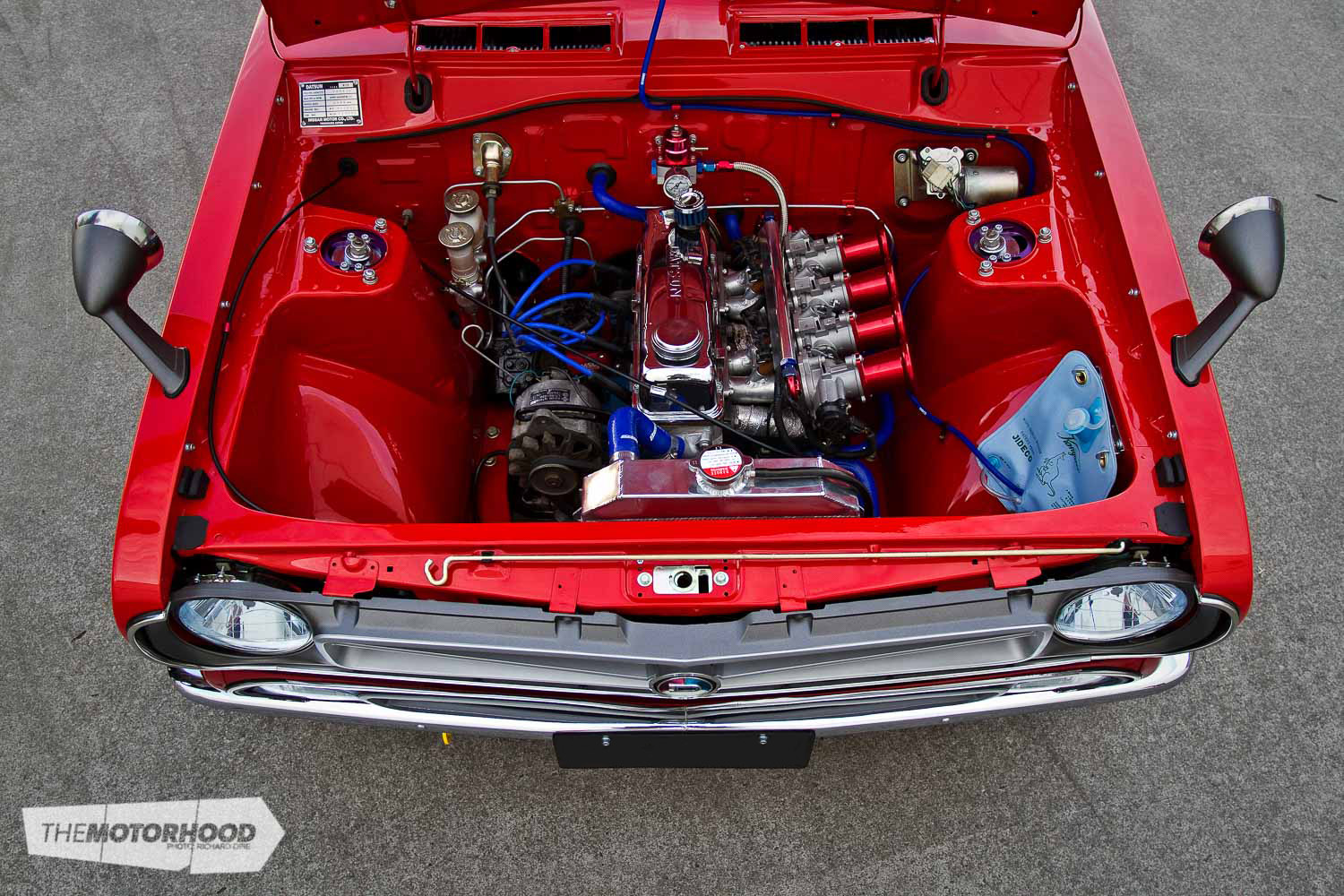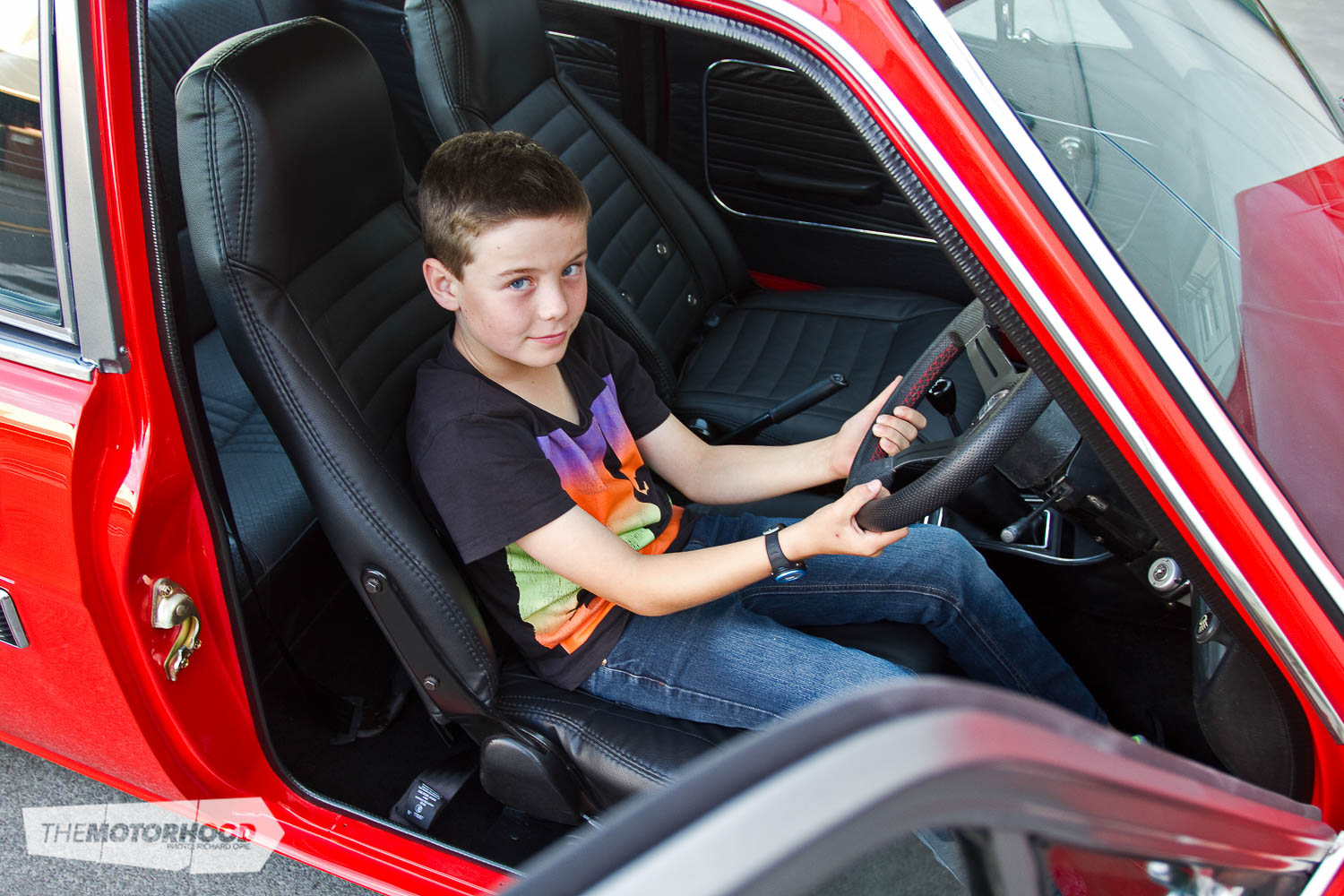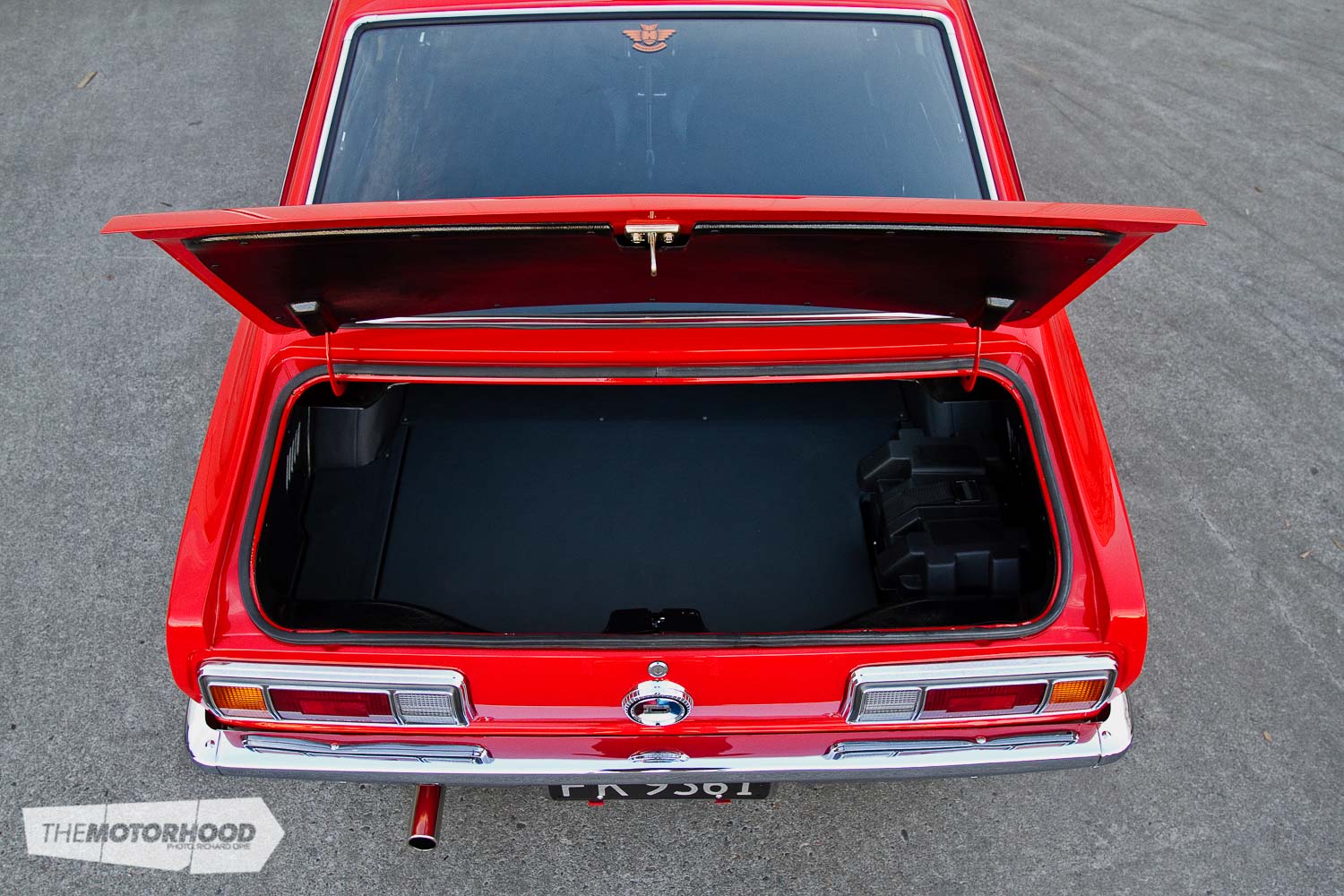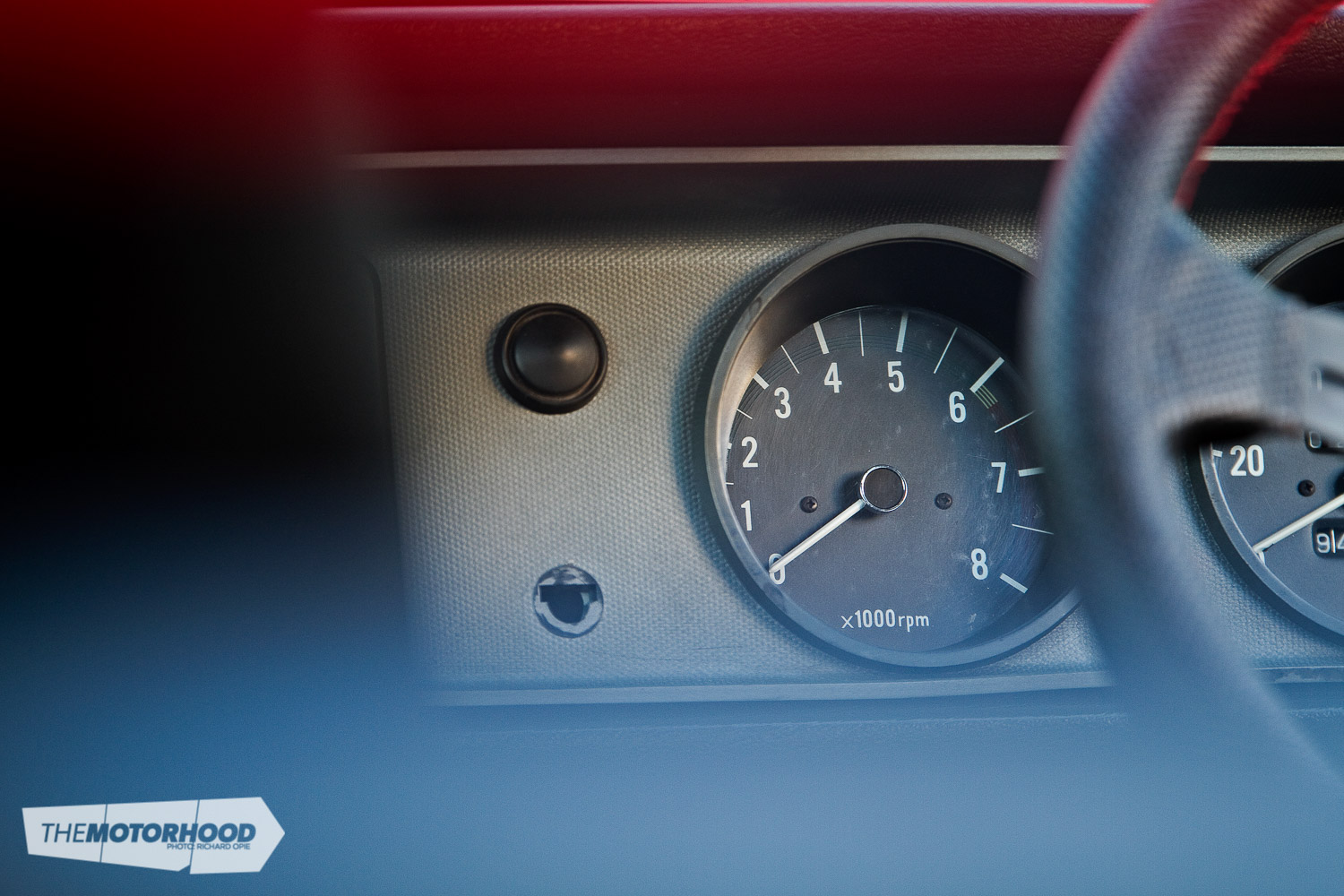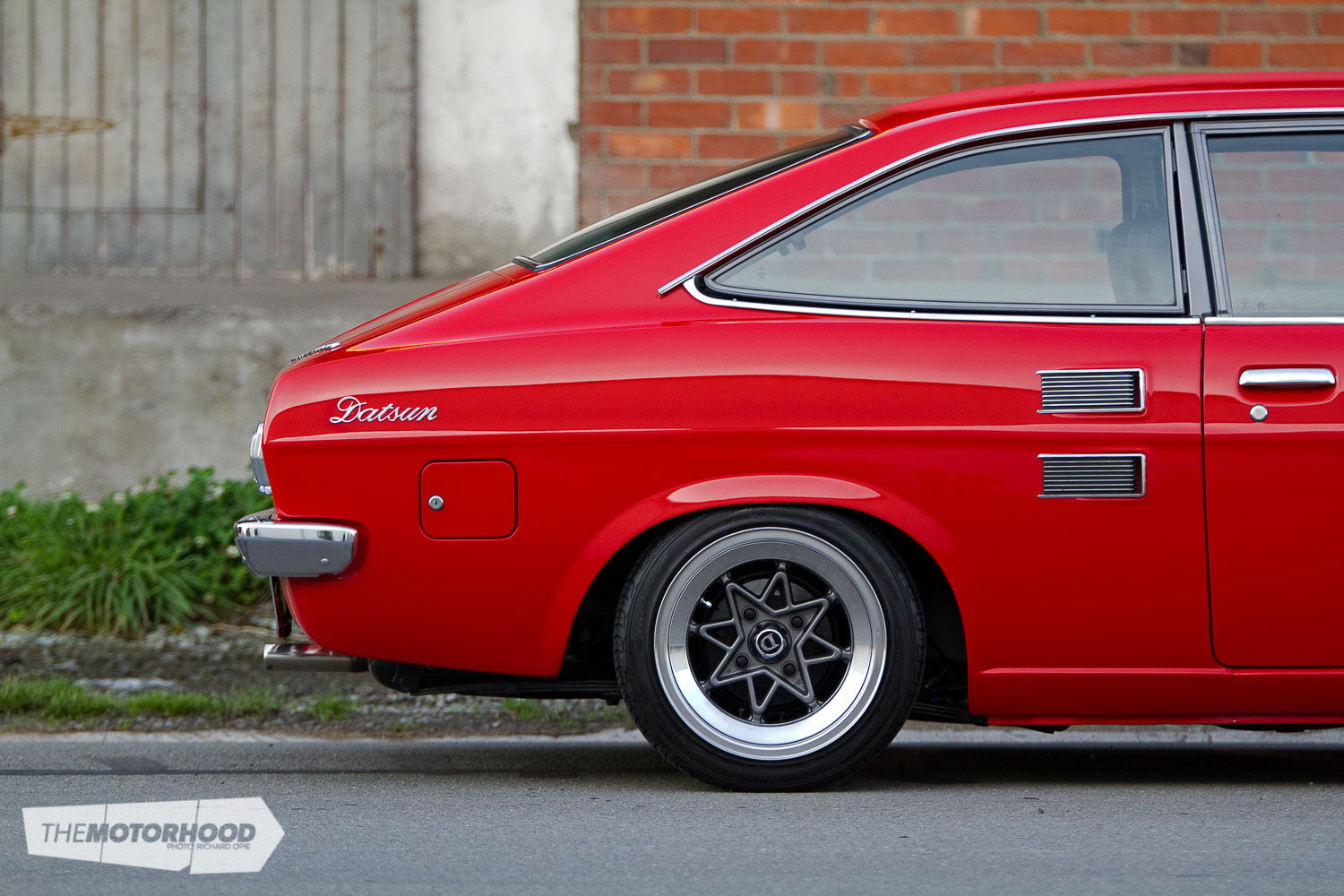data-animation-override>
“Immaculate and raucous, this 1972 Datsun 1200 coupé pushes the boundaries of period-correct modifying”

When it comes to putting a personal touch on an older modified car, there’s typically a couple of different methods builders use to stamp their own mark upon the nostalgic chassis of their choice.

In an approach favoured more in contemporary times, the ‘retro-tech’ trend favours stuffing a present-day, high-tech power plant and driveline into a retro shell with up-to-date suspension and brake components ensuring the rubber stays on the tarmac and the tin pointing skywards. Conversely, the alternative approach is to retain the period character of the car by restricting modification techniques to those effected when the model was still in its prime — older power plants breathing angrily through sidedraft carbs, simple suspension upgrades using bolt-in upgrades from higher-specced cars, and diminutive wheel-and-tyre combinations reflecting a style of decades past.

But what happens when a strong desire to maintain period architecture collides with a burning urge to install modern upgrades in pursuit of greater power and perhaps — most importantly — driveability? You may well end up with something resembling Andrew “Kitch” Kitching’s 1972 Datsun 1200 coupé, one of the most complete examples of the cult (here in Kiwiland) export version of the KB110 Nissan Sunny. Having spent a lifetime dabbling with cars, Andrew’s list of vehicles that have graced garage space at his place of residence could fill an entire issue of NZ Performance Car — but way back in 1992, the first of more than 15 Datsuns found its way into Kitch’s clutches for a wad of 10 $20 notes. Credited with kick-starting a diagnosed Datsun disease (just ask wife Karen about that one!) was a B110 Datsun 1200 sedan and 16 years later, Andrew found himself staring down the barrel of another project 1200, this time a coupé with a goal to recapture the emotion and enthusiasm that captivated him as a budding petrolhead.

With only 94,000 miles showing on the clock, the 1200 was in complete, original condition upon acquisition having been in dry storage for around seven years serving time as a backup shell for a team involved in rallying a 1200 coupé. Convincing the Christchurch gravel-bashers the car was too good to chop up for crash repair sections, Andrew dragged the red rocket back to home base in Timaru to embark upon creating the ideal 1200 coupé.

Outwardly Andrew’s coupé is striking for being, well, decidedly not that striking. Eschewing the usual body modifications such as bolt-on fibreglass flares and chin spoilers, the 1200’s only body modifications to the distinctive silhouette are found in the form of subtly reshaped arches — in steel of course. Following a thorough sodium blast and ground-up restoration on a rotisserie, the boys at HBomb Customs & Classics coated the impeccably straight panels in an aptly named shade of Lush red, recapturing the lustre of new but with depth and shine achieved only by an expert operator with modern paint techniques. The retro car buff’s methamphetamine — new old stock parts — adorn the exterior. Andrew sourced new badging, light lenses, trim, a pair of JDM GX-spec fender mirrors and those sparkling chrome bumpers.
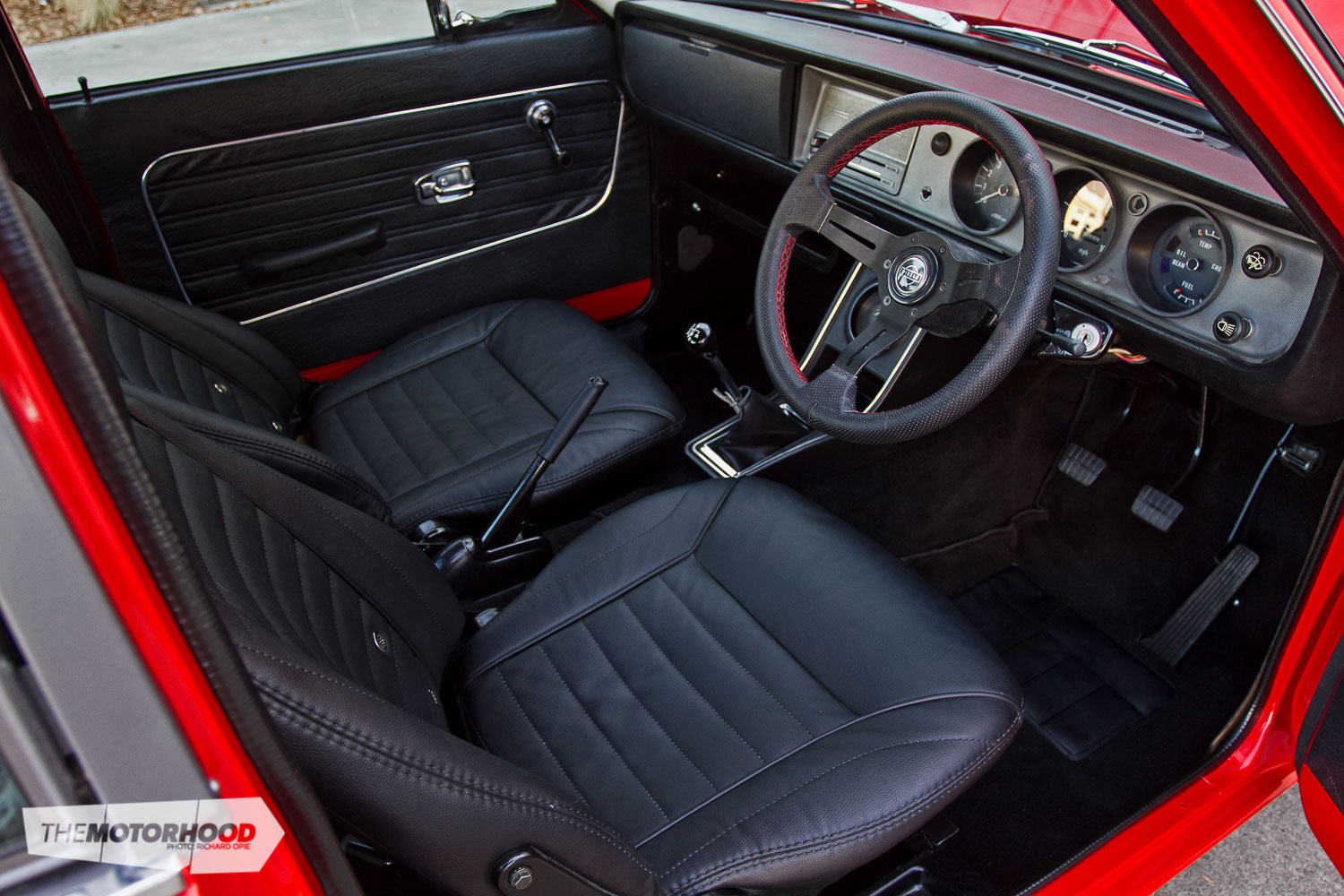
Inside the Datsun retains its 1970s charm atop a comprehensive Dynamat Superlite install to bring NVH (noise vibration harshness) levels up to 2015, OEM black trim remains — again with subtle upgrades taking the shape of S30 240Z front reclining seats — while nostalgic palms grip a dished Nardi-style steering wheel and point the little coupé towards each apex while remembering what it was like to be sixteen again, peering at the tacho dash trying not to valve-bounce the little A12 engine clattering beneath the bonnet.

The jewel beneath that bonnet is where the new-to-old fusion really happens however. Lifting the 1200’s bonnet open wide reveals the coupé still packs a Datsun A-series pushrod engine within the deloomed, silky smooth engine bay — but your uncle would have never built one like this back in the ’80s. Utilizing a 1500cc A15 long block, Andrew has treated the engine to a host of go fast goodies: oversize pistons; A14 crank and rods; full balancing; a torquey cam grind and a worked over head. But dangling from the passenger’s side of the non-crossflow four-banger is a set of 43mm ITBs sourced from a Silvertop 4AGE. Mounted on a custom alloy inlet manifold complete with neatly welded injector bosses, the throttles are topped off with a set of screaming-red anodised T3 velocity stacks. ECU-wise a Megasquirt MS2 controls the retro-modern collusion, utilizing a VR sensor crank trigger to fire an MSD-wasted spark ignition. Preliminary tuning netted an angry 92kw (123hp) at 7200rpm, almost double the 51kW (69hp) and it sounds superb.

Keeping the Datsun firmly on the road is a simple but effective undercar setup. Being a leaf- spring rear, options are limited, so uprated leaf springs, reset to a lower height and damped by Koni adjustable shocks, ensure the treads stay put. Up front, shortened OEM housings contain Monroe inserts controlling HSD coilover springs with a modest 3kg/mm rate. Alignment is set perfectly with the use of D2 S13 pillow ball camber plates, modified LCAs and castor rods while an uprated 20mm anti-roll bar keeps the coupé flat under spirited driving. Nissan rotors of 255mm with S13 calipers hide behind the final retro flourish — a spectacular set of 14-inch Hayashi Techno Racing TR-V wheels, freshly polished by the wheel fetishists at Pine Engineering and coated in a glossy gunmetal hue.

So where too now for a man with a self-admitted Datsun disorder? Well, in the short term — just get out and drive. With son Will proving as eager as dad to spin spanners on retro Japanese tin, perhaps the next generation of Kitching will put together a retro-modern project of his own and maybe, just maybe 10 years from now you’ll be reading about a B310 Sunny wagon packing an A-series electric hybrid powertrain, built by a chap from Timaru with a desire to capture the essence of his first taste of petrol in the veins.
1972 Datsun 1200 coupé
Heart
- Engine: Nissan A15
- Block: Mazda 40 oversize fly-cut pistons, A14 crank and rods, machined and polished. Decked block, modified oil pump, baffled sump, medium race-grind cam, balanced engine internals
- Head: Ported and planed, performance double-valve springs, Nismo head gasket
- Intake: Custom alloy inlet manifold, 43mm individual throttle bodies (ex 4AGE silvertop), Techno Toy Tuning red anodized trumpets, vacuum manifold block set-up for ECU balanced MAP signal
- Exhaust: Four-into-one headers (heat wrapped), two-inch system, singular rear muffler
- Fuel: Facet lift pump, Integrated Engineering under-car surge tank system with submerged Bosch 044, AN6 fittings, inline filters, braided feed line, hardline return
- Ignition: Platinum plugs, custom performance leads, MSD wasted spark ignition coil setup, VR crank speed sensor setup, removed dizzy
- ECU: Megasquirt MS2 set-up with V3 daughterboard and on-board wasted spark coil drivers, Bluetooth tuning and monitoring capabilities.
- Cooling: Alloy triple-core replacement radiator, 10-inch electric fan. BProjects blue silicon hoses
- Extra: Deloomed where possible, battery relocated to boot, NOS washer bottle
Drive
- Gearbox: Overhauled Nissan 60A five-speed gearbox
- Clutch: Exedy heavy duty
- Flywheel: Lightened
- Diff: Nissan Roadstar Ute H165 diff assembly (4.1 ratio)
Support
- Struts: (F) shortened Monroe inserts, HSD 45mm coilover sleeve kit, 3kg/mm springs, (R) Koni basic adjustable shock, reset leaf springs with additional spring fitted to pack
- Brakes: (F) 255mm OEM Nissan rotors, overhauled S13 front caliper setup, braided lines, new master cylinder, (R) all new components and machined OEM drums
- Extra: Nolathane bushes throughout, D2 S13 spec camber plates, 30mm anodized alloy roll centre adjusters, custom panhard rod setup, modified lower control arms, castor rods, upgraded 20mm heavier sway bar
Shoes
- Wheels: (F) 14×6.5-inch Techno Racing Wheels (R) 14×7-inch Techno Racing Wheels
- Tyres: 195/45R14 Hankook Ventus Prime asymmetric
Exterior
- Paint: Dupont Centari 5035 paint (Lush red)
- Enhancements: Full sodium blast and rotisserie ground-up rebuild by HBomb Custom & Classics, subtle reshaped wheel arches, Raybrig H4 headlights, genuine new old stock bumpers, front lights, chrome, badges, emblems where possible, GX style Murakami JDM fender mirrors
Interior
- Seats: (F) retrimmed S30 (R) OEM
- Steering wheel Replica Nardi wheel
- Instrumentation: Factory rev gauges, Innovate Motorsports LC-1 wideband Oxygen Sensor setup
- Other: Dynamat Superlite throughout

- Driver/Owner: Andrew Kitching
- Age: 39
- Location: Timaru
- Occupation: Project manager / draughtsman
- Build time: 7.5 years
- Length of ownership: 7.5 years
- Thanks: My tolerant wife Karen and daughter Jorja; my right-hand man Will (son); Hadleigh and Frank at HBomb Customs & Classics (0274256956); Brendon McEwen and all the other awesome guys in the New Zealand Datsun Club Community for their technical support and encouragement throughout the build; Pat Coll at Draftline Ltd; Scott Baker at Embedded Design Ltd; Lewis Horrell at Horrell Performance & Design Ltd; and all other friends and family who have encouraged me through the journey
This article was originally published in NZ Performance Car Issue No. 225. You can pick up a print copy or a digital copy of the magazine below:






